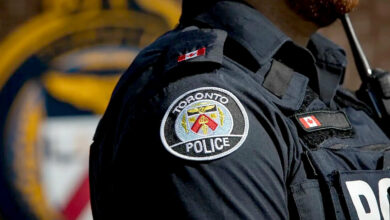Who owns the land?
The concept of land ownership across the world has not only evolved over time, but also varied from place to place. In 20th century Japan and earlier, and contrary to most of the rest of the world, real estate was perceived as a depreciating asset, similar to owning a car. As a building got older and fell into disrepair, it was worth less and less money. Only the earth beneath the buildings themselves maintained any value. This is something that might seem unimaginable in Toronto’s ever-climbing real estate market where buildings in disrepair seem to be constantly and continuously appreciating, becoming more and more expensive over time. We have built a culture of land ownership that see’s property and buildings as infinitely appreciating in value, as housing and commercial real-estate supply and demand curves are manipulated to incentivize the settlement of more and more land. But this hasn’t been the case forever.
A case study might be the indigenous peoples of Manhattan. Legend states that the first inhabitants, the Lenape people, sold the island to Dutch colonists for only a small collection of hardgoods and a very small sum of “cash.” The Lenape people, and most of the indigenous peoples in North America, had a different concept of land ownership, and likely laughed at the Dutch proposal of trading for the entire island of Manhattan. It would be as if your friend today offered to trade you a pair of shoes for a cloud in the sky. We all know that you can’t really own a cloud, so you’d probably just take advantage of the trade and grab that free pair of shoes. Fast forward a couple of hundred years, and in 1776, America gains its independence. Resultantly, the “American Dream” as we all know it, is born. Its principal values being life, liberty and the pursuit of happiness, but with the underlying implication that property ownership, and more importantly, land ownership was fundamental to this new utopia.
In this new America, the idea of privately owning land has been sacred, almost in complete contrast to the indigenous value system that land not being ownable is sacred. This, in the larger context that the unceded land we as Canadians/Americans stand on has almost completely been taken by force. I argue that the historical existence of affordable real estate in pre-modern North America was almost completely built off the displacement and genocide of indigenous peoples from their land, creating a surplus of space on a continental scale, and resultantly a high supply of available (and low-cost) land to come to, settle, and ultimately – own.
This brings me to a hotbed topic in the America’s. Reparations and the legacy of colonialism. It’s no secret that Canada is a country that grew out of British and French colonialism from the 1600’s onwards. We throw this term around so much, but when exactly did colonialism end? With the independence of Canada in 1867? Did it end at all? We’re all still here, on the land, aren’t we?
What does this say about contemporary immigration? Are newcomers to Canada in 2024 partaking in colonization? Perpetuating the trade of land that was stolen from first nations peoples? Foreign and overseas property ownership has also become increasingly common in Canada’s biggest cities, with private investors who have never been to, nor will ever come to Canada, buying up large portions of the available housing supply. Is this neo-colonialism? This is perhaps an instigating question, but one we might want to ask when considering the legacy and future of “who owns the land” in Canada.
On the topic of reparations, for those of whom who have had their ancestral lands taken from them, how do we quantify in dollar amounts (or even in square kilometers of space) what reparations are owed? There is a long history of forcibly resettling indigenous populations on un-farmable, poor-quality land, that often disrupted their ancestral lifestyles involving hunting, nomadic traditions and more. But this system is extremely “othering” to indigenous communities, which has often forced them to choose between living in disconnected, and remote communities, or assimilating into settler-built cities and risk losing their distinct cultural identities and heritage.
In the case of the Luso world, what is the debt owed (if any at all) from Portugal to it’s former colonies, like Brazil, Angola, Mozambique, Goa etc? This question is being asked a lot recently. For a place like Brazil, that has experienced so much ethnic and cultural mixing between ethnic Europeans, Africans, Indigenous peoples, and more recently, Asian newcomers, how do we even define indigeneity? How do we differentiate between the colonizers and the colonized? More often than not, it seems Latin and Luso Americans are eager to distance themselves from any European ethnic heritage, self-identifying as a separate ethnic identity, and as the recipients of colonization, rather than the descendants of the colonizers themselves. Navigating these identities is crucial to peaceful cultural relations across the Luso world, but also in answering these recurring reparations queries.
Regarding Canada, our population continues to be ever-growing, which further immortalizes Canada as an occupant of the land it holds. It seems trivial to consider all non-indigenous peoples getting up and leaving the country, heading back to their origins, giving land back to First Nations peoples. It would displace nearly 40 million people. So how do we account for the damage and loss caused by the way this country was built? Are the descendants of early colonists the inheritors of these debts? These seem like impossible questions to answer.
But as Canada continues to welcome newcomers in record breaking quantities, we must also balance our debt to indigenous peoples as we continue to settle this historically unceded territory. We have built a national brand as a safe haven and refuge for those “tired, huddled, masses” as well as a beacon for wealthy newcomers to find an education, start businesses and thrive. But we might also want to reconcile with the history of the question: who’s land is it anyways?
Jonathan Smith






Redes Sociais - Comentários